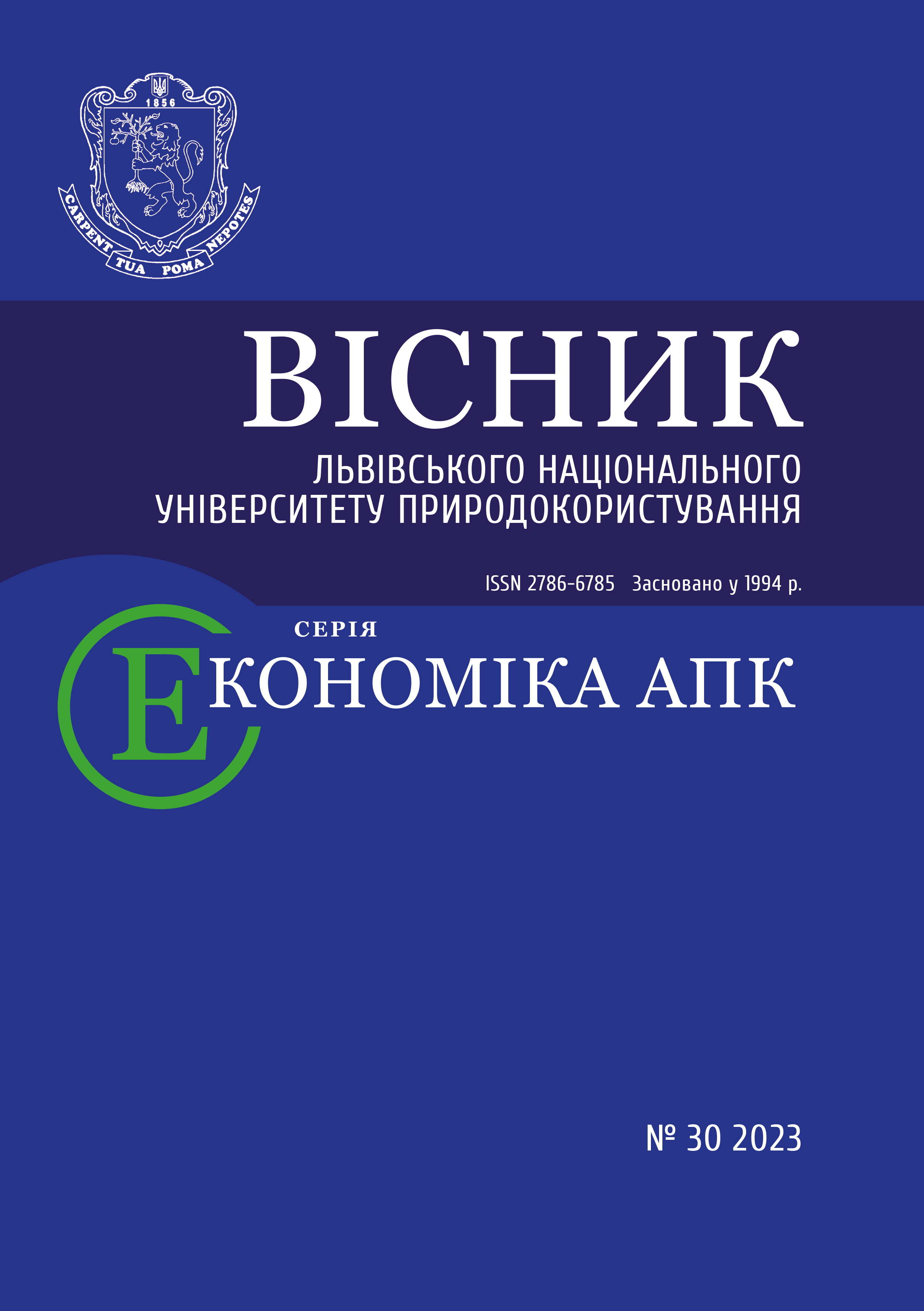FINANCIAL AND ECONOMIC CONDITIONS OF THE EXCHANGE RATE FORMATION
DOI:
https://doi.org/10.31734/economics2023.30.084Keywords:
exchange rate, export, import, national debt, gold and foreign exchange reserves, foreign direct investment, currency interventionAbstract
Formation of the exchange rate is one of the most important aspects of the country's financial policy. Accordingly, without studying the factors influencing its formation, it is impossible to determine the measures that can ensure the effective monetary policy. The purpose of the article is to show the mutual influence of macroeconomic indicators and the exchange rate, in particular, to analyze the economic and market mechanisms which create its basis. Understanding such mechanisms and their development should be used to develop a monetary policy aimed at a long-term perspective. Formation of an effective market economy is impossible without such process. Since development of the market relations in the country requires a transition from the operational regulation of the currency rate to the long-term planning and forecasting. It is established that the main factors to achieve currency stabilization and positive dynamics of the exchange rate in the future include structural and sectoral transformations in the economy, which should ensure the growth of output of high value-added products, make partial import substitution and increase foreign exchange earnings and foreign investments in the economy as the main the factor of supplying currency at the currency market. The article discusses essence of the exchange rate and its types. The factors of formation of a market exchange rate in Ukraine are presented. Interrelation of the exchange rate and the macroeconomic indicators such as trade balance, export, import, gold and foreign exchange reserves, national debt and others are investigated. The main factors influencing the supply and demand of currency at the foreign exchange market are analyzed. The main factors of devaluation of the national monetary unit and the need to form a market course for sustainable economic development are determined. The dynamics of the mentioned macroeconomic indicators and the effect of the exchange rate on them, in particular, the structure of export-import operations of the country, are explored. Based on the research, the authors made conclusions on the measures necessary for currency stabilization.
References
Bereslavska O. Hryvnia exchange rate formation in the context of transformations in the world currency system. NBU Bulletin. 2018. No 3. P. 10–16.
Dziuoblyk O. V. Currency policy as a factor of macroeconomic stabilization. Finances of Ukraine. 2019. No 11. P. 33–51.
Luchkovska S. I. Financial and legal aspects of distinguishing the content of currency restrictions and currency control. Journal of Kyiv University of Law. 2017. No 2. P. 164–168.
Official exchange rate of hryvnia against foreign currencies. URL: https://bank.gov.ua/ua/markets/-exchangerate-chart?cn%5B%5D=USD&startDate=31.12.2014&endDate=-01.06.2023. (Last accessed 01 June 2023).
Official website of the National Bank of Ukraine. URL: http://www.bank. gov.ua (Last accessed 15 June 2023).
Official website of the State Statistics Service of Ukraine. URL: www.ukrstat.gov.ua (Last accessed 19 June 2023).
Shpeniuk O. Regulation of the hryvnia exchange rate in conditions of financial instability. The world of finance. 2016. No 1. P. 86–98.
Yurchyshyn V. Modern currency policy and features of its implementation in Ukraine. Kyiv: Zapovit, 2016. 120 p.
Zhuravka F. O. Currency policy in the conditions of transformational changes in the economy of Ukraine: monograph. Sumy: Business Perspectives; SHEI «UABS NBU», 2008. 334 p.


